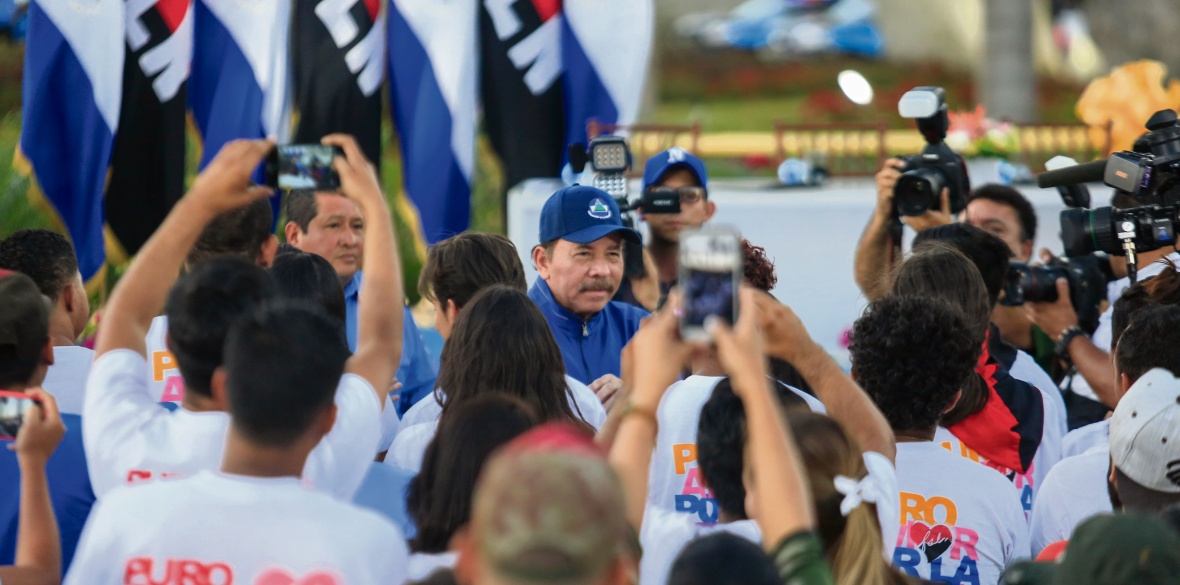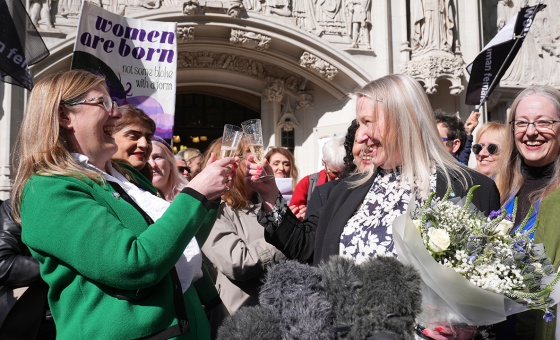This is the last article you can read this month
You can read more article this month
You can read more articles this month
Sorry your limit is up for this month
Reset on:
Please help support the Morning Star by subscribing here
DESCRIBED as a mentor by the late Venezuelan president Hugo Chavez and thought of by Cuban leader Fidel Castro as a fellow revolutionary and comrade, Nicaraguan President Daniel Ortega remains, for some, an unknown quantity.
There is no doubt that he is revered by Sandinista supporters. To them he is simply known as “Daniel” — their leader, their commander.
Many people expressed this to me as the country celebrated the 40th anniversary of the 1979 Sandinista Revolution in July.
Hundreds of thousands came to the capital Managua from across the country travelling for hours, some making their way by boat, others by yellow school buses as the capital turned a sea of red and black — the colours of the flag of the FSLN.
There was a carnival atmosphere across the city. The night before was celebrated in true Nicaraguan style, with singing, dancing and, of course, rum. It seemed like the whole of Managua was on the streets and in the bars ahead of the celebrations.
On the day itself the crowds were waiting for one person — Daniel. It was a moment that is hard to describe.
The closest I have seen was the support from ordinary Venezuelans for Chavez. But when Ortega appeared on the stage it was like a sense of calm enveloped the people who fell silent in anticipation.
It was a moment where the people and Daniel almost seemed at one and I began to understand the nature of the relationship between them.
But for some reason, unlike Chavez, Fidel Castro, Che Guevara and other revolutionary leaders, Ortega seems not to hold the same prestige among internationalists.
I spent two weeks in Nicaragua speaking to ordinary people about their president. All of them dismissed claims he was a dictator as portrayed in the western liberal press as propaganda and all of them rejected the opposition, who they derided as “Golpistas,” with no internal support.
In my interview with the President and Vice-President Rosario Murillo, which took place in Managua days after the celebrations, I posed the same question that I had been asking Nicaraguans — who is Daniel Ortega?
“I am a survivor,” he replied. “When we began the struggle, very young all of us, many of us were jailed and tortured and spent years in prison.”
Ortega himself was jailed at least five times, spending seven continuous years behind bars, which he described as “a time of rich experiences.”
“We were liberated by the actions of the Frente Sandinista and we continued in the struggle.
“But we never imagined that we would live to see the victory. When we would gather as comrades and plan we would ask one anorher who would be the next.
“We were convinced that our time to die in the struggle would eventually come. But we had the conviction, we were certain that we would reach victory, that we would win.”
Ortega said he was a survivor “thanks to God” and had always had Christian beliefs and Christian values.
When people asked him about his ideology in the 1980s, a time when the US branded the Sandinista Revolution a communist coup in cold-war fear-mongering, he insisted that his inspiration was Jesus Christ, “as a person that has struggled for justice, that has struggled for peace.
“Later on in my life I learned about Leninism, about Marxism and other things but my inspiration throughout all my life has always been Christ,” he affirmed.
The influence of the Catholic church in daily life was evident throughout Nicaragua and clearly played a role in the FSLN in the struggle against the Somoza dictatorship, with many embracing both Christian and Marxist ideology.
The Sandinista Revolution saw the participation of radicalised priests, with many breaking from Somocismo in 1968, adopting a liberation theology which deemed “revolutionary insurrection” justified in the face of tyranny.
Others, including FSLN founding member Carlos Fonseca, remained resolutely atheist, committed to Marxism and the revolutionary ideas known as Sandinismo.
It was this mix which also included Maoists, liberals, non-aligned radicals and others which is said to have been the strength of the revolutionary movement that came to power in 1979.
Ortega explained that after sweeping aside the Somoza dictatorship in July 1979, the Sandinista movement had to deal with the aggression by the US who funded the counter-revolutionary forces known as the Contras.
Ortega and the FSLN were elected in 1984, facing hostility from imperialist forces, including sanctions, bombing operations and Washington-imposed blockades.
Despite this, the Sandinista government was able to implement poverty-reduction programmes, nationalisation of key sectors of society, a massive national literacy drive and land redistribution among many other progressive policies.
They lost power in 1990, following a narrow defeat in the elections despite remaning the biggest party, as the reactionary opposition forces came together in an anti-Sandinista bloc.
It is alleged that following the vote, many were queuing to receive their $40 in return for voting for Violetta Chamorra — an incredible sum when the average income was less than $200 per year.
The Sandinistas spent 16 years in opposition “governing from below” and Ortega explains that despite having the strength and power to overthrow any one of the neoliberal governments, they chose not to.
“During some of the worst moments of crisis during the liberal governments, some of them proposed handing back the government to us [Sandinistas]. We turned them down we said we would not do it that way, we would come back to power only through the people’s votes.”
The FSLN returned to power in 2007 and began to implement the many social programmes in housing, health, education and poverty reduction.
“We were able to see the economic advances,” Ortega said, “but the US didn’t want this type of government … They couldn’t understand and they were irritated that after so many years the Frente Sandinista was able to come back to power after they fought in the counter-revolutionary war.”
Despite numerous attempts on his life during the 1980s and the subsequent threats to kill him during the recent coup attempt, Ortega says he has never used an armoured car.
“My armoured car is Christ. My armoured car is the people of Nicaragua who protect me,” he explained.
Vice-President Rosario Murillo intervened to add that Ortega is a strong leader because of his faith.
“In the middle of the hardest circumstances he has this patience and energy,” she explained, adding: “This is a great quality.”
“Strength with compassion but without despair. He has to think all the ways to overcome whatever circumstances and whatever difficulties you are facing.
“And he showed that last year [during the coup attempt]. You saw it when he went to that theatre, the National Dialogue. I don’t know how he did it…
“Looking at everyone and listening and thinking with patience … We had our people kidnapped, at least 2,500, and the police locked up in their stations. That doesn’t happen anywhere but we accepted this. Daniel has wisdom and humility, he is very noble.”
During the meeting he announced his intention to stand for election in 2021, a poll that imperialist forces and big businesses have insisted be brought forward.
Polls show him with a comfortable lead, keeping in line with a trend that has shown his vote increase from 38 per cent in 2006 to 62 per cent in 2011 and 72 per cent in 2016.
Similarly the FSLN has increased its support, winning 52 municipalities (out of 153) in 2000, 87 in 2004, 105 in 2008, 134 in 2012 and 135 in 2017.
While the media insist that Ortega is an unpopular figure and lacks support in Nicaragua, the statistics and the public displays of support and affection tell a different story.
As with other countries across the region, the decision about who runs their country belongs to the people, not US imperialism. The Nicaraguans know what is at stake and are prepared to defend it.










